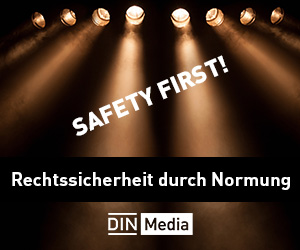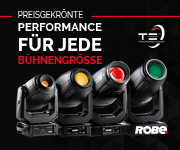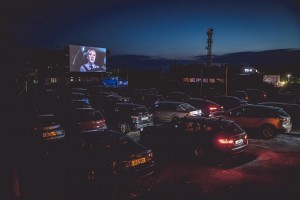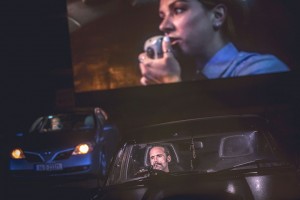Aktuelle News & Schlagzeilen
Corona: Astera Titan Tubes used for “Fiach” drive-in drama in Ireland
“Fiach”, a new work by Philip Doherty, unites the disciplines of theatre, cinema and comedy in a live onstage and in-car drama, accompanied by large format video visuals, a sound system, and theatrical lighting - all in a Covid-safe drive-in viewing environment.
Lighting designer Mick Murray selected a kit of eight Astera Titan Tubes for the Irish-language work which was presented (with English surtitles) by Fíbín in association with An Taibhdhearc in a car park at Baile na hAbhann, Connemara, County Galway, Ireland, starring actors Fionnuala Flaherty and Dara Devaney.
Producers Fíbín asked Mick Murray to create the lighting, video and staging designs. The Astera Titan Tubes were supplied by lighting rental and installations specialist Cue One. Murray and Doherty, who also directed his work, discussed numerous elements and ideas. The requirement was for a mix of cinematic and theatrical lighting techniques and treatments.
In the stage design, Murray positioned two cars on staging decks with the actors inside as far as possible into the audience. Four Astera Titan Tubes were rigged in the two cars and the other four on the four ‘scenic’ streetlights complete with custom-designed 3D printed hoods.
Inside the two chase cars, Murray needed both key and effects lighting. The Titan Tubes were the main key lights, augmented with fill coming from LED strips placed on the sun visors and dashboards. In the police car, the Titans were secured either side along the top of the front doors; in the other one, the dealer’s Ford Capri, one was in front and one on the left.
Live camera feeds from the cars were beamed up onto a billboard style projection screen behind the cars. Much of the pre-recorded video content and close up shots - feet on accelerators, hands of steering wheels, etc., plus some additional optical trickery - was also shot on site during the rehearsal period, all coordinated and compiled by Mick Murray and programmed onto a Smode media server.
“The Astera units were pixel mapped for effects to run over their static show states which were varied slightly in colour and intensity”, comments Murray. The streetlight effects threw the atmosphere and tension out in the audience/car area via slow animated pixel chases on the Titan Tubes.
The printed sleeve of the streetlight hood fitted over and protected the centre of the Titan Tube and slid into a T-shaped key-clamp fitting mounted on top of 4 metre high lighting booms. The hood also incorporated the mounting hardware supplied with the 8-way Titan Tube kits - a hole in the end of each hood accepted the M5 rigging eyelet and a slot/holes enabled the aluminium mounting clip to be screwed to two parts of the hood and attached to the Tube.
All eight Titan Tubes were run powered, via thin DC cables back to the Titan charger located in the boots of the cars, and were programmed, together with the other lights, via an ETC Ion lighting console by Ritchie Lambert who was working as Murray’s assistant LD. The car headlights were also DMX controlled and run through the lighting desk for the performance.
The show evolved over about six weeks, four of which were spent on site ahead of the first show, building, preparing, tech’ing, rehearsing, shooting the prerecorded video parts, etc. Accommodating 45 cars at the Connemara site, each show was sold out for the two-week run.
(Photos: Sean T. O’Meallaigh)
SCHLAGZEILEN
news archiv
suche
© 1999 - 2025 Entertainment Technology Press Limited News Stories







-p.jpg)




-p.jpg)
